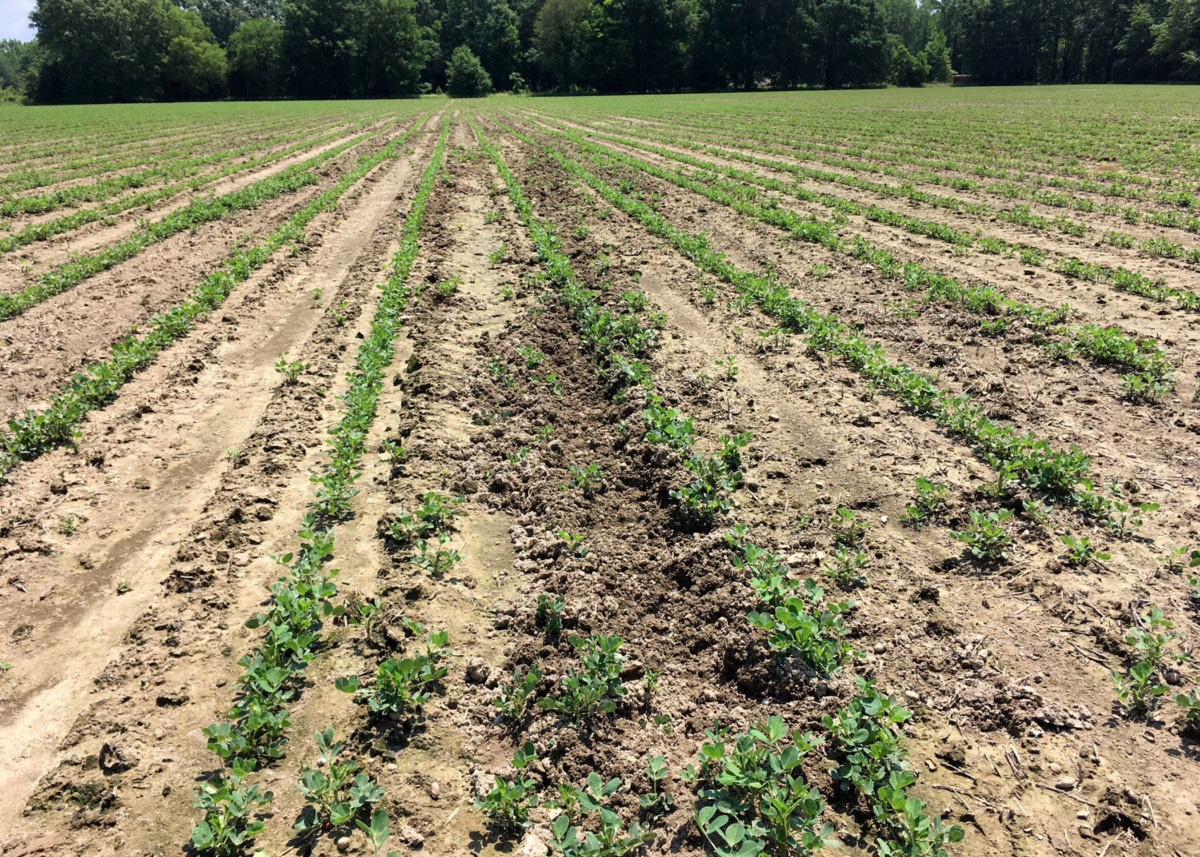Peanut growers are experiencing a mixed bag of conditions
across the southeastern United States in general and Mississippi in
particular. Malcolm Broome, executive director of the Mississippi Peanut Growers Association said many of the state’s growers had to stop planting because of dry conditions. Scattered showers before the final week in May helped both planting and growing conditions.
“It has been a mixed bag depending on the southeastern location. About half
of the nation’s peanuts are grown in Georgia, and a lot of East Georgia fields are dry. Some parts of West Georgia are too wet,” he said. “We may be planting a little late in south Mississippi and still have some dry pockets
in the Delta.”
Charlie Stokes, an agronomic crops agent with the Mississippi State
University Extension Service examines many peanut fields in Monroe County
and some adjacent counties.
“Just when we started needing rain to help with planting conditions, we got
some, so we’ve mostly had adequate moisture. There have been some isolated cases of too much rain that necessitated replanting,” Stokes said. “Acreage in this area is down slightly, maybe 15 percent less than last year.”
Stokes said 2017 yields were strong, averaging about 4,000 pounds per acre.
“Early rains help with planting conditions and also with getting stands
established. Then growers turn their attention to managing herbicide
applications to control weeds,” Stokes said.
Broome said peanut-producing states will have fewer planted acres in 2018.
The U.S. Department of Agriculture is forecasting 30,000 acres of peanuts in
Mississippi, down 14,000 acres or 32 percent. The national decline is 18
percent from 2017.
“Fewer acres won’t help market prices this year, but it should be good for
next year,” he said. “Also, issues related to peanuts in the new farm bill
will be favorable for growers, so the future is bright.”
Broome said the number of producers has been growing in Mississippi. The
growers’ association formed in 2006 with about a dozen farmers. This year,
the organization has 125 growers.
“Peanuts have been a lifeline for some Mississippi farmers,” he said. “They
can grow in almost any soil, but a sandy loam is key to harvesting. Growers
need at least 300 acres for rotational use with cotton or corn to make it
worth the investment.”
Broome compared peanuts to specialty crops.
“Peanuts come with a big risk but also a good reward if you do it right and
the weather cooperates,” he said.
Larry Falconer, agricultural economist at the Delta Research and Extension
Center in Stoneville, said large supplies carried over from last year will
likely contribute to lower prices this season.
“USDA is forecasting the season average farm price for peanuts in this
marketing year to average 21.25 cents per pound, down almost 8 percent from the previous year,” he said. “The lower prices will probably contribute to a
sharp decrease in production.”




